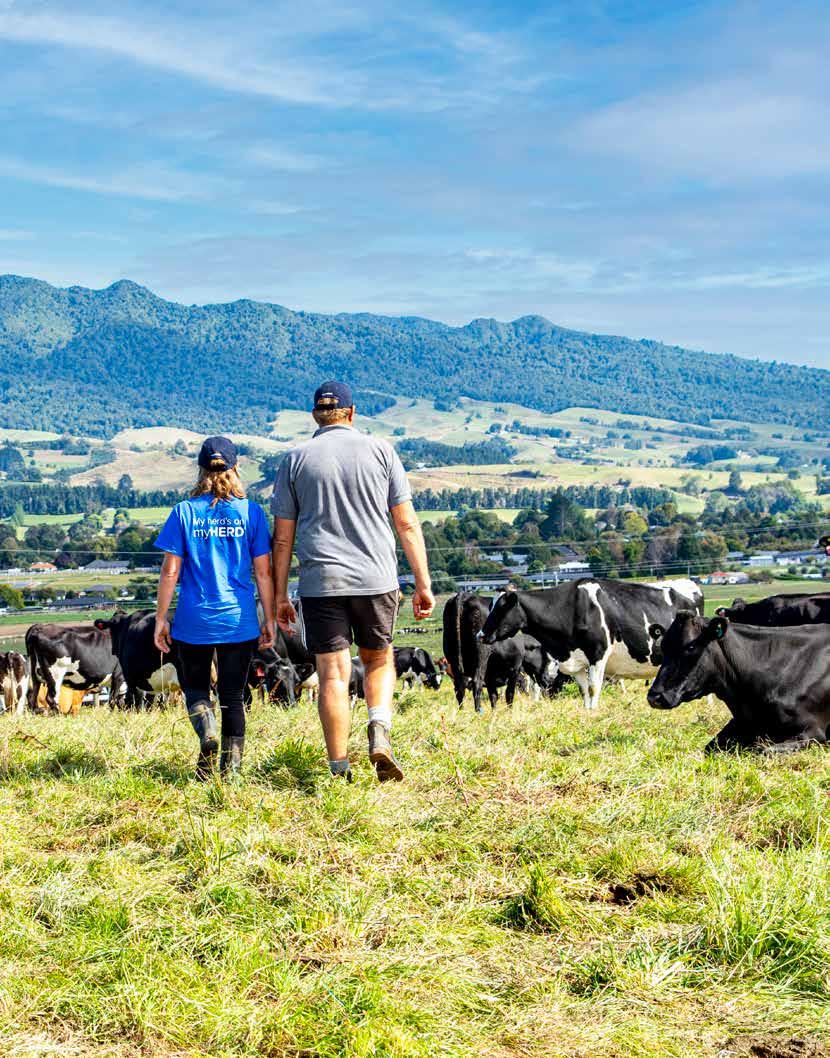myDNA Information Guide





Congratulations! By DNA testing with CRV, you are one step closer to adding more value to your herd.
With myDNA identify, select, and manage your herd with confidence knowing you are making the right decisions for your business.
Rearing a replacement heifer costs between $1800-$2000 before her first lactation. So, it’s worthwhile using myDNA to help pinpoint animals with the highest potential at a younger age to drive a high-performing herd, best suited to your individual breeding goals.
By identifying your top performers, you are also better placed to use precision breeding products such as sexed semen.
The world we farm in continues to change but myDNA can help provide certainty when it comes to your herd and give you confidence in your decisions.
We look forward to working with you and your herd.
02

Take DNA samples from your milking herd in autumn (for spring calves) – use a technician for more accurate results.
04 In 4-6 weeks, CRV will load results
06

Order your equipment and their mothers are automatically matched, correcting mismothering.
You can now make more informed breeding and culling decisions for every animal in your herd over its lifetime. from calves as they are tagged, then send to CRV.
Two of the key benefits of DNA testing is ensuring the correct identification of animals at calving and enabling you to predict the future performance of your animals through the availability of genomic data.
Parentage verification is one of the key benefits of myDNA. Correct pedigrees give you a solid foundation for making breeding and mating decisions in your herd. Even on small farms an average of 25% of calves get mis-mothered each year.
myDNA Parentage will give you sire and dam confirmation on the animal. Sires have a lot of animal data which can greatly influence your animal’s breeding values so getting this right is important. Dam verification is available if she has a profile with us.
Use myDNA Parentage to make calving easier. When your whole herd is DNA tested there is no need to mother calves in the paddock. Simply pick up all the calves and take a small tissue sample when you tag them. They will be matched back to the correct dam automatically.
What’s included?
Genomic Breeding Values (for myHERD customers)
* Sire only if Dam is not present
myDNA genomics offers the most comprehensive information on your animals.
Genomics is a powerful technology that more accurately predicts the performance of animals over their lifetime. This allows for more informed decisions at an earlier age.
Basing decisions on little or inaccurate data slows down genetic gain and reduces your return on investment. DNA testing allows you to make better decisions from the beginning of an animal’s life.
Parent average breeding values have low reliability due to inheritance being random. It has been scientifically proven that genes inherited are not 50/50 from both parents. Instead, one parent can have a greater influence over another. Looking at the animal’s own DNA (genomics) provides more reliable predictions of performance by identifying what they have inherited from both sire and dam.
The genomic predictions are based on New Zealand data so the breeding values are relevant to your farming system..
/ 53
/ 58
/ 59
/ 29
/ 52
/ 57
/ 26 + additional breeding values
Add value to your herd by selecting single gene tests.
Use CRV A2 Milk Company certified DNA testing to identify A2 status of your herd. DNA testing is a great option for young or non-milking animals allowing you to identify the A1 carriers in your herd. Whether you want to supply A2 milk or are looking to sell animals, knowing the A2 status can help secure a premium.
Herd summary:
CRV offers polled (hornless) testing for beef and dairy animals. Growing animal welfare concerns, indicate a move towards less de-horning on farm. CRV’s DNA testing service can help you identify and breed polled animals.
Animals can either have two, one, or no copies of the dominant polled gene. Animals with two copies will always produce polled offspring; animals with one copy will produce 50% polled and 50% horned offspring and animals with 0 copies will always have horned.
Test for BVD in your animals at the same time as your DNA sampling.
Bovine Viral Diarrhoea (BVD) is a serious disease that can cause economic and production losses on your farm. Around 80% of herds have been exposed to BVD in New Zealand. The cost of a BVD infection in an average herd is estimated at $70,000 annually (sourced from DairyNZ). Persistently infected (PI) animals are primarily responsible for the spread of disease - these animals are virus supershedders and cannot clear infection. They should be identified and culled at the first opportunity.
Test for BVD in your herd at the same time as your DNA sampling. No need to take additional samples. A great option for beef or young dairy stock. Results are available in seven days.Calves can be tested from 48 hours of age
Any animals who get a positive result can be retested after 21 days free of charge.
BVD is an additional test that needs to be done at the time of sampling so cannot be done retrospectively.


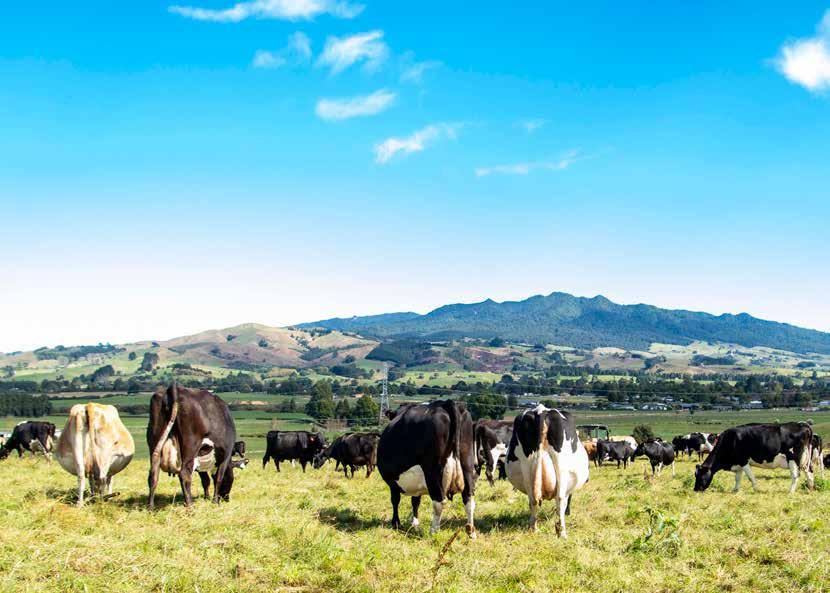
Get the full benefit from myDNA by testing your whole herd. Spring calving? We recommend taking advantage of whole herd DNA testing in autumn.
FOUR REASONS TO TEST YOUR WHOLE HERD:
⊲ Accelerate genetic gain - correctly identify animals in your herd to make more informed long-term decisions.
⊲ Reduce stress at calving - no need to mother calves in the paddock, instead you’ll have the data at your fingertips.
⊲ It’s fast - testing an average herd will take our technicians less than a day. Check out the video of one of our highly trained technicians in action (page 9).
⊲ Add value to your herd - the upfront investment is far outweighed by the value you’ll gain over time, with faster improvement in your herd, and time savings. Plus, for whole herd testing, interest free finance options are available.
1 2 3 4
Equipment is sent direct to your farm which includes the tissue sampling vials and pre-addressed courier bag to send samples to the lab.
Technicians will contact you to arrange a time to sample your animals.
Techs take all samples and post them to the lab.
Results are returned to you and loaded into myHERD so you can make decisions straight away!
Equipment needed to take the samples:
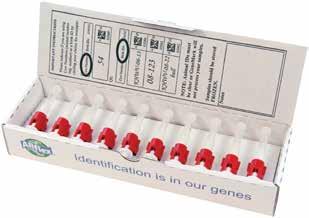

TECHNICIAN ASSIST
A technician will help you take samples of your animals. They use an EID reader and bar code scanner to check all animal details against herd records and correct these at point of sampling. They are very accurate and is the gold standard of sampling. Watch the tech in action!


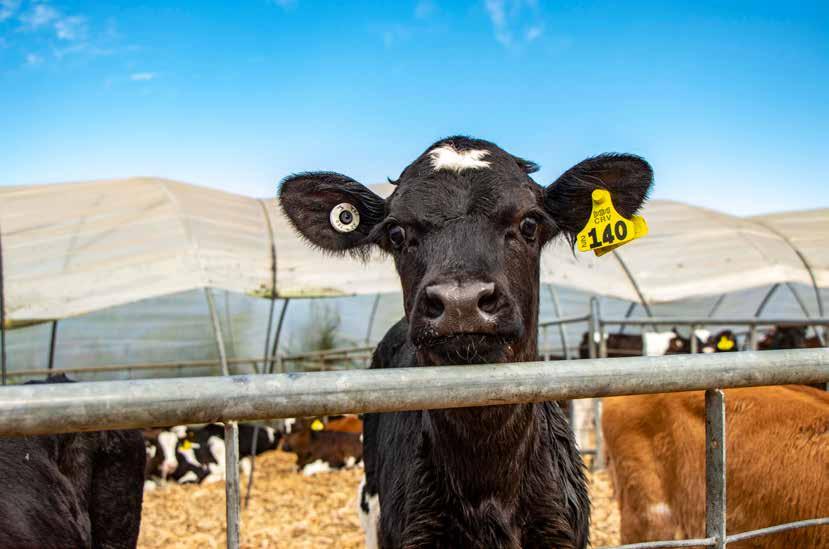
Research shows that greater than 25% of calves in New Zealand are mismothered.
Mismothering causes not only the wrong dam to be assigned to the calf but also the wrong sire. This will heavily influence the lifetime genetic predictions of the progeny. Having the incorrect sire and dam assigned could cause inbreeding issues and inaccurate management decisions.
DNA testing has made calving time much easier to manage. We can’t be there 24 hours a day for every birth and by using myDNA you don’t need to be. Simply take a DNA sample and have your calves matched back to their correct sire and dam. With the cost of breeding a replacement sitting at approximately $1,800-$2,000 per animal, it’s important that you are rearing the best calves with confidence.
For Waikato dairy farmer Mark Brown, myDNA provides confidence when it comes to matching calves to their parents. It is just too easy to get calves mixed up. I’ve seen two cows calve in a paddock, I’ve tagged the calves, and then five minutes later seen those calves switch mothers. DNA testing removes some of the stress at calving and the process for testing is easy –we just tagged the calves as they came in.

Whether you have DNA tested your whole herd and want to continue to test your annual replacements or are beginning to build a herd profile by testing your calves, calf sampling is easy!
DNA calf tags are sent as part of your ear tag order. The tags come with a pre-linked sample so there is no need to write down any IDs. 1
2
3
Tag the animal with matching birth-ID and NAIT tag then take DNA sample with linked vial.
Store the samples in the fridge and post to our lab when you have sampled all your replacements.
Sampling equipment:
DNA TSU sample vial

myDNA calf tags
NAIT tags
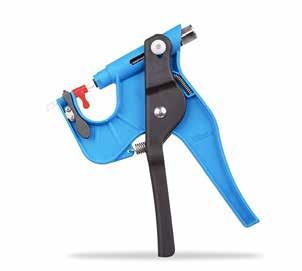
Farmers are able to utilise the power of DNA to assign the correct dam, without accurately mothering calves to cows in the paddock, which results in less stress at calving time. This is a real value add part of our myDNA service.
This guide explains how to enter your calvings so your herd recording and associated dataflow goes smoothly. Please note, all potential dams must have a profile with CRV to utilise this service.
What to do on your myHERD app at calving time:
1. As your cows calve, enter their calving date. It is important you enter her accurate calving date as this will become the date of birth for her heifer calf.
2. All calves must have a gender and fate assigned (see below)
a. Record the heifer calves born on that day as reared with a replacement Birth ID, (don’t worry too much which dams you assign these calves to as the DNA result will correct this). Do this for all heifers retained, even if replacement numbers are achieved.
b. Record the balance of calves born on that day with their gender as bobbied, sold, died; as per your normal procedure.
3. At the end of calving all your cows will have been calved on their accurate date, and there will be the total number of heifer replacements you are keeping recorded in myHERD.
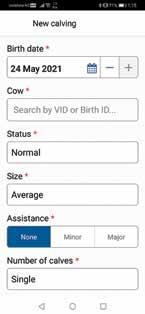
4. Send the collected DNA samples to the laboratory at end of calving.
5. We suggest you retain all heifer replacements until you receive your DNA results. Based on the DNA result you can then make confident, accurate and informed decisions on the best heifers to keep in your herd.
6. It is important you enter your heifer replacements with Birth IDs at point of calving in myHERD as outlined above. By doing this it allows you to record events against the heifer but also to ensure you stay NAIT compliant.


You can expect your DNA results back in 4-6 weeks from CRV receiving samples.
You will get a confirmation email to notify you that your animals have been successfully profiled and a report containing your results.
When recording with myHERD any herd recording errors identified by a technician will be corrected by the myHERD team. If you are not recording with myHERD you are responsible for passing these corrections onto your provider.
A DNA symbol will show against these animals in myHERD. These animals can now be successfully linked to future progeny.
Your tested animals’ pedigrees will automatically update in myHERD based on results.
A DNA symbol will show against these animals in myHERD. These animals can now be successfully linked to future progeny.
These animals can now successfully be linked to future progeny.
Parentage results can be added to other recording platforms but you will need to pay an additional fee.
All your tested animals will automatically update to show the A2, polled and BVD results in myHERD If selected as an add-on in myDNA order.
If you wish to load in single gene test results into herd recording platforms other than myHERD, you will need to add these manually. A2 can now be added to other recording platforms for an additional fee charged by that platform.
myDNA Report
Dategenerated:01-07-202209:05 myDNA Report Totalcows76|AvgBW269|AvgPW297|AvgNZMI293
Totalcows76|AvgBW269|AvgPW297|AvgNZMI293
CRV Jerseys| 2 Melody Lane, Hamilton East, Hamilton |PT code: CRV |Farmgate:#12345678910
4


If you are recording with myHERD your myDNA results will automatically upload to the system.
Dategenerated:01-07-202209:05
Dategenerated:01-07-202209:05
Use myHERD to make the most of your data by identifying trends in production at an individual, mob and herd level. Plus, access detailed records per cow to understand fertility, production, and health.
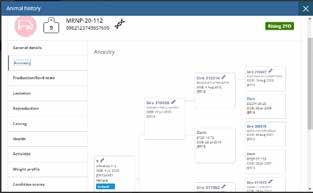
You will receive an email from CRV with your parentage results. Once these results have come through we will send the animals’ genotypes to be included in the next monthly Animal Evaluation (AE) run.
Genomic breeding values will then automatically upload into myHERD.. Each AE run, the gBVs will be updated.
Reliability increases after testing with myDNA Genomics
Genomic information increases the reliability of your animals’ breeding values by an average of 25%.
Including genomic information increases the reliability and accuracy of your animal’s breeding values.
Raise the best replacements and make more informed decisions by identifying predictors of CRV health and efficiency before calves enter the herd. No need to wait two years for production information.
Upgrade animals that already have a profile with CRV, without the need for further testing.
The genomic predictions are based on New Zealand data so the breeding values are relevant to your situation.
Genomic results
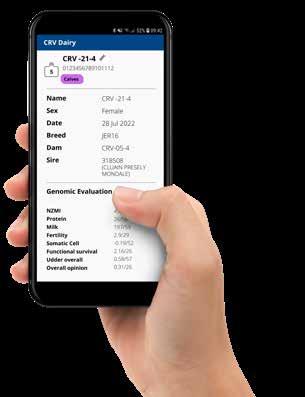
Can I take the sample myself?
Yes, you can take samples yourself by using the tissue punch pliers and punch kits. We recommend using one of our technicians for the easiest and fastest DNA sampling. Our technicians are very accurate which prevents errors happening at point of sampling. Or use our pre-linked DNA tag sets for animals that haven’t been tagged.
What animal number do I use for my samples?
We will ALWAYS need the animal’s Birth ID (ABCD-20-123). If you are not using myHERD as your herd recording platform, the myDNA results will not be accepted by another herd recording platform if not sent with valid Birth ID.
Do you have DNA birth tags for calves?
Yes! For quick and easy calf sampling use our myDNA calf tags. You receive a pre-linked NAIT tag, birth ID and tissue sample vial. No need to write anything down! Simply tag your calves and take the tissue sample at the same time.
When will I get my results?
Once you have sent your samples to our lab they will extract the DNA and analyze the sample. This process takes 4-6 weeks. Your results will be sent out to you immediately via email and loaded into your herd recording platform.
Why did my animals not get a match?
Animals can be matched to their parents if the parents also have a DNA profile in CRV’s database. This means both parents must have been profiled through CRV. Check with us if you are not sure whether the parent has a profile with CRV.
Can I get A2 or polled results retrospectively?
Yes, if your animals have a profile with CRV. We are able to re-analyze the profiles and provide a A2, polled or parentage results for an additional charge. You will need to resample if you require a BVD result at a later date.
Is there an age limit on BVD testing?
There is no age limit on BVD testing. Tissue sampling is a good option for young or beef animals who are not yet lactating and can’t be tested through milk.
How long do the tissue samples last for after I take them?
Samples will last up to 18 months in the fridge. We always recommend keeping the samples in the fridge if you aren’t sending them right away.
DO NOT:
⊲ Freeze samples
⊲ Leave samples exposed to the sun
⊲ Let samples get hot
If any of the above happens to your samples you may need to re-test your animals.
What happens to my data if I move herd recording providers?
The information you pay for when testing will always move with the animals regardless of your herd recording provider. e.g animals with verified parentage will remain verified when moving platforms.
How do I post my samples?
CRV samples contain preservative so there is no need to post samples with ice packs to keep them cold. Just send samples with submission form, in the pre-addressed courier bag you received with the equipment.
Send samples to:
GenomNZ, AgResearch, Invermay Agricultural Centre, 176 Puddle Alley, Mosgiel, 9092, New Zealand
